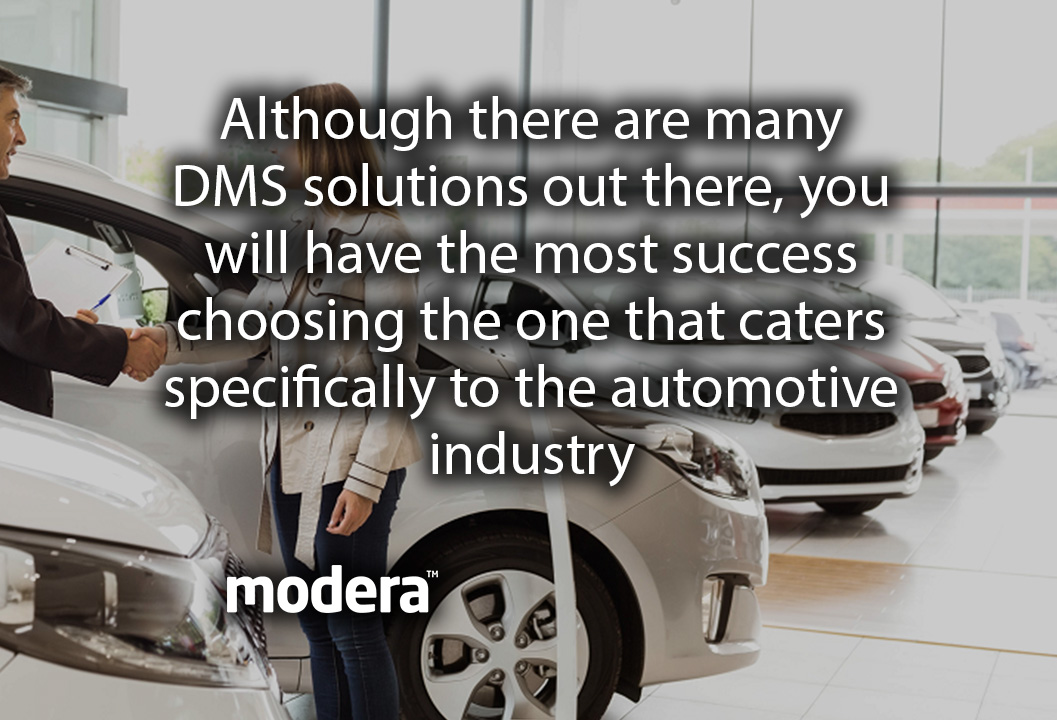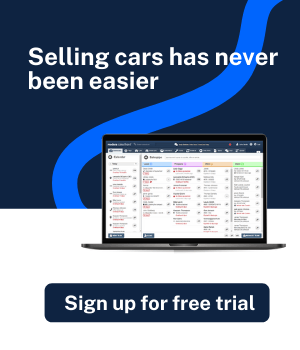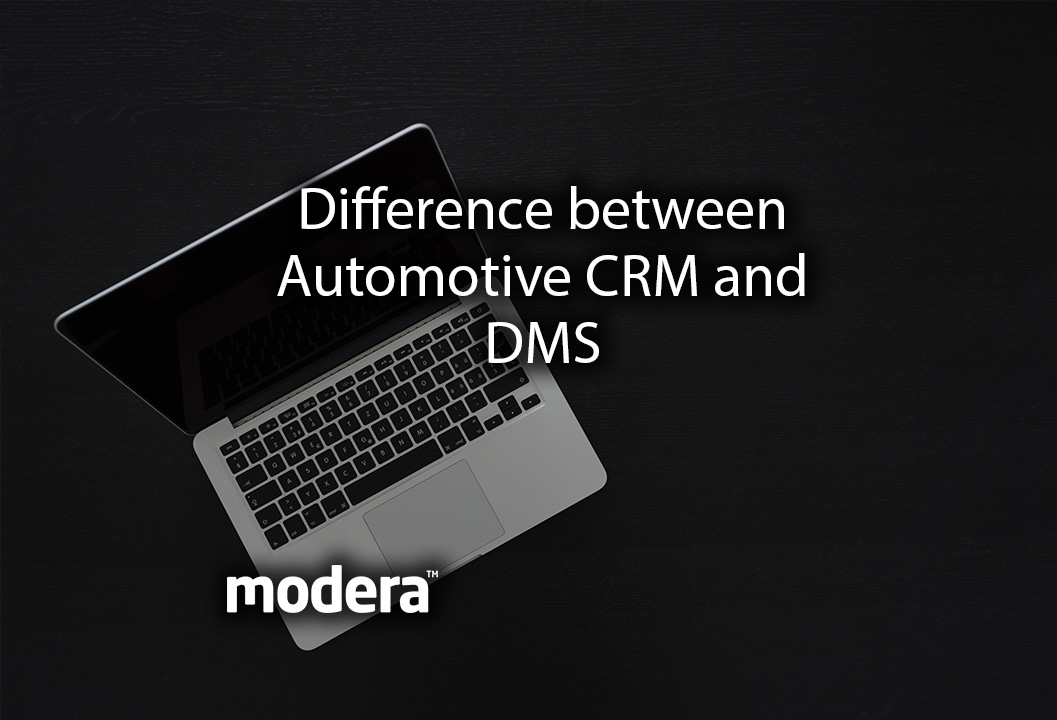
You must have heard about Customer Relationship Management Software and Dealer Management Software being used at car dealerships these days. The reason is simple – to offer an exceptional car buying experience. So expecptional that customers spread positive word-of-mouth, are satisfied with services, and eventually return as repeat customers. But do you need both Automotive CRM and DMS? What is the difference between the two? Let us find out!
What is automotive CRM Relationship Management Software (CRM)?
An automotive CRM software, enables businesses to enhance their relationship with existing customers. And also to find new prospective customers or win back former customers. When your dealership generates revenues by selling cars and offering after-sales services to customers, then CRM software is a must. Unless all of your new customers simply walk into your store, you have to invest significant time in luring them. Dealerships generally hire salespeople to get new customers. But in order to be efficient and productive, even the best salespeople require a system to help them. That is why you require a CMS as it offers the following benefits:
- Better customer satisfaction.
- Boost in revenue.
- Better internal communication between departments.
There are many advantages to using a dealership CRM software, but it is important to find DMS that syncs with it as well.
What are the 3 types of CRM systems?
The right CRM system can help your dealership communicate with customers and create a healthy, long-lasting relationship. But before purchasing automotive CRM software, it is imperative to understand the differences. There are three main types – operational, analytical and collaborative. Once you know more, you can determine which is the best suited for your business.
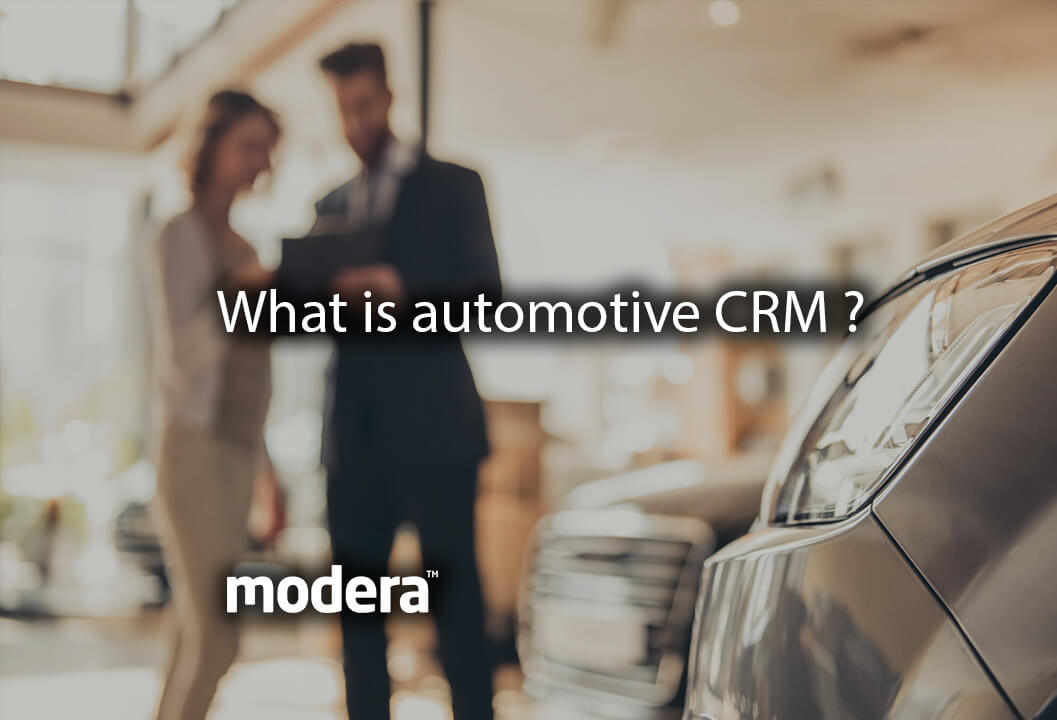
A CRM system manages and analyzes customer data and interactions to improve customer service, aid in retention and drive sales growth. Over time, the number of tools and functions of a CRM system has expanded to cover every period in the customer lifecycle. But how does a dealership know which of the three types of CRM system is right for it? Let us take a peek:
1) Operational CRM
Operational CRM streamlines various processes for customer relationships and helps apply them to the central business process. It is used to generate leads, convert them into contacts, and provide the service infrastructure needed to retain customers. And also blends all business processes, such as customer service, marketing and sales, into a single unit within a dealership. Its primary goal is to help streamline business operations, centralize customer interactions and sales, marketing processes, and service and support efforts in one place. Moreover, it stores information on customers, leads and employees using a shared platform to better support existing and potential customers.
A CRM system manages and analyzes customer data and interactions to improve customer service, aid in retention and drive sales growth. An operational CRM system captures customer details and uses them to provide service across the customer lifecycle. Including marketing, sales and service automation. Take a look:
1.1.) Marketing automation
While marketing activities help businesses communicate information about their products and services to their existing and potential customer base. Automation aims to find the best way to offer products and approach potential customers using campaign management modules. Marketing automation also helps dealerships decide on effective channels. Such as email, phone calls, ads on social media and more, in order to target potential customers.

1.2) Sales automation
Sales automation organizes information to help businesses meet customers’ needs and increase sales more efficiently and effectively. It includes various CRM sales modules such as lead management, contact management and sales forecasting.
1.3) Service automation
This component is the connection point between service reps or teams and customers. Its functionality covers many things, including setting up inboxes that aggregate customer emails, coordinating live chats and setting up chatbots. Further, service automation provides ways to delegate service tasks to reps via ticketing systems and can include knowledge base or FAQ pages as additional features.
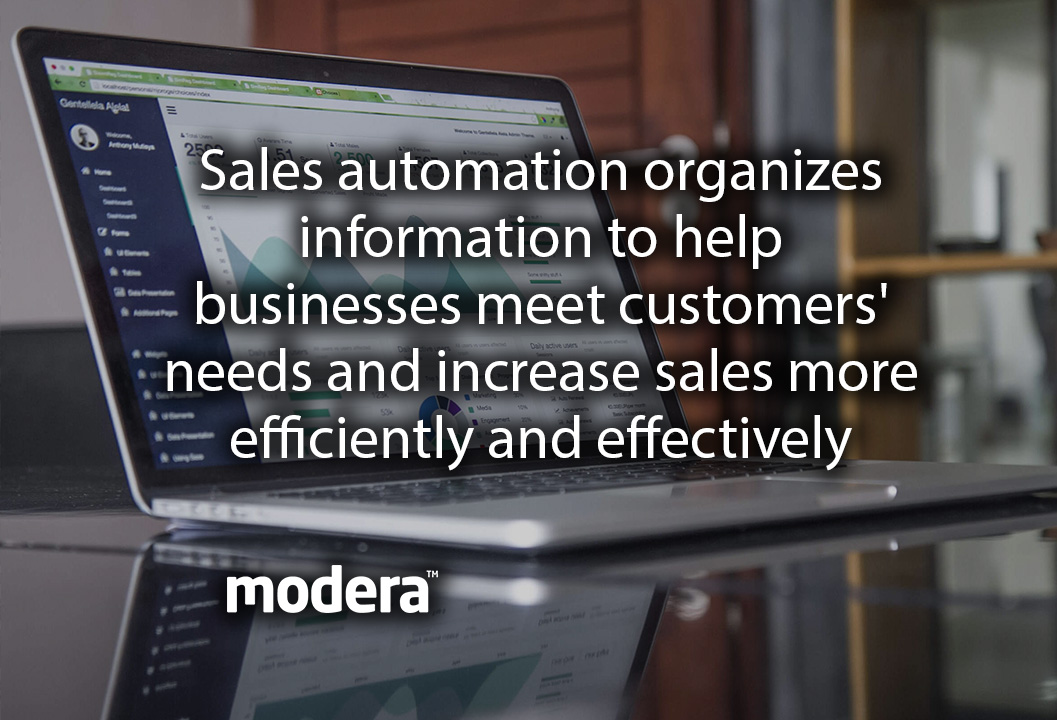
2) Analytical CRM
It enables organizations to better understand the data gathered on customers and their interactions with the business. It is a vital resource for turning large amounts of data into actionable insights. The primary goal of an analytical automotive CRM is to leverage customer data into trends and actionable insights the dealership can use to improve the customer experience. Data from an analytical CRM can include customer preferences, channels, touchpoints, trends, forecasting and more.
Analytical CRM systems do a great job when it comes to helping dealerships parse large amounts of data. It helps devise strategies to develop new leads, increase customer retention and create efficiencies for the sales and marketing departments.
However, while analytical CRM systems can help understand a large amount of data, they can also be more technical and difficult to understand without dedicated staff. Additionally, the insights gleaned from the data are only as good as the data entered. And inconsistent entries can skew the results. Analytical CRM systems are best for mid-size and large businesses that gather large amounts of data and want to distill that data into trends and insights.
3) Collaborative CRM
Also known as strategic CRM, it bridges the gap between teams and departments to share information and create a hassle-free customer experience. It enables different teams or functional areas in an organization to share customer data. The result is that everyone uses the same knowledge base about the customers to make decisions. It is imperative for creating a holistic approach to managing customer relationships. While operational automotive CRM tools often focus on marketing and sales, collaborative CRM systems focus primarily on customer service. A collaborative CRM system has two components:
- Interaction management – it tracks the touchpoints between a business and its customers through various communication channels. Interaction management helps the dealership manage and keep track of each exchange to ensure customers are not over-communicated. If that happens, customers might feel like they are being hounded and block all forms of communication from the dealership.
- Channel management – it uses the information gathered from interaction management to help identify the best communication channel to use for a particular customer.
This type of CRM system works to improve the information shared between the sales, marketing and customer support departments. Since these teams work separately, a collaborative CRM tool can help break down those silos to address customer needs and manage customer relationships effectively. However, given this system’s interdependent, collaborative nature, it’ is essential to use it correctly. Otherwise, the connection between touchpoints could break down, and the customer experience will suffer. Dealerships that operate across multiple locations or work in siloed teams can use a collaborative CRM system to streamline how they gather customer information and communicate with them.
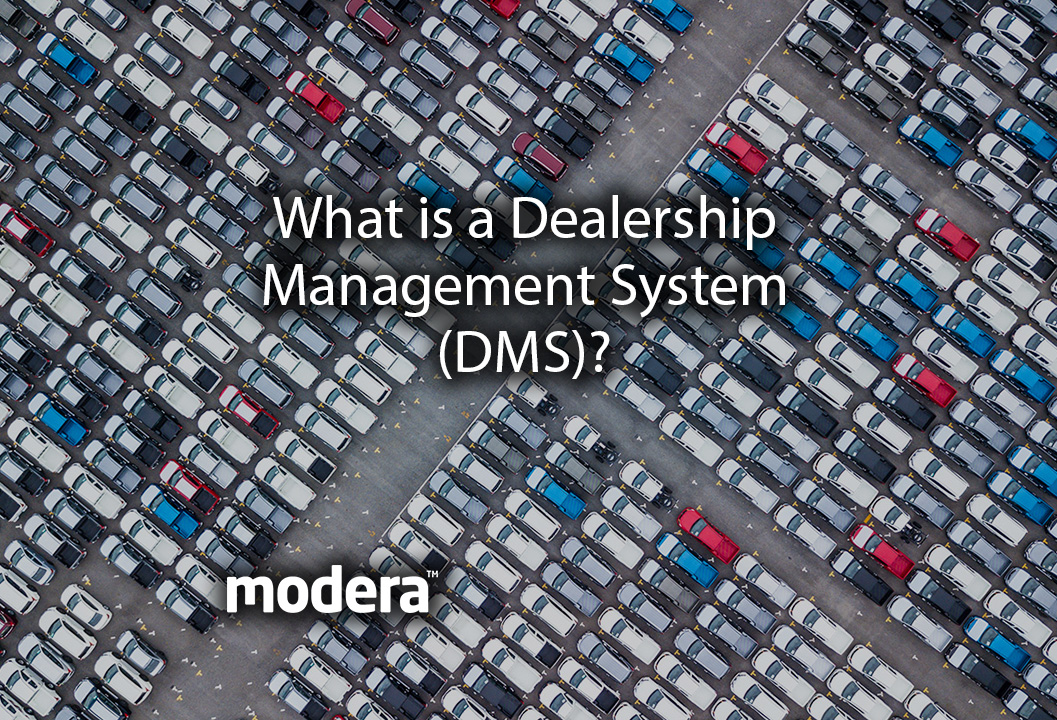
What is a Dealership Management System (DMS)?
A dealership management system (DMS) is a business management software provider for dealerships to help them manage their day-to-day business activities. But most systems tend to be generic and are a one-size-fits-all solution for different businesses. The generic options aren’t equipped to handle more specific requirements tailored to the automotive industry, such as parts and service management.
What does a DMS do?
Consider the various departments of a dealership such as sales, finance, customer service and so on. A dealership has a lot of moving parts, which is why it requires tremendous organization to keep those parts running smoothly.
Some dealerships still keep track of departments manually by using pen and paper or a punch card system. These methods slow down processes and leave room for human error. Although using different systems for various departments may work for a period when your dealership is still small, the problem is that these older techniques can’t meet the requirements of a growing business.
While dealer management systems have advanced significantly over the last few decades, many industries still lack industry-specific, “all-in-one” systems. Systems that are customized as per their business model. Dealers will benefit most from a fully integrated DMS that streamlines all the operational areas of a dealership in one place. Allowing the different departments of a dealership to operate seamlessly with one another.
Why is DMS required?
Pretty much every dealership can benefit from having a DMS. Be it sales, finance, service, parts, or IT, a DMS allows dealers to manage all aspects of their business and reduce inefficiencies between departments. Anyone at a dealership can use a DMS to boost productivity and efficiency, including service managers, accountants, technicians, and more.
Although there are many DMS solutions out there, you will have the most success choosing the one that caters specifically to the automotive industry. Ultimately, it is not the computer system that will solve business problems – it is the people who solve problems. But if you spend several hours trying to figure out what the problem is, then you have less time fixing it. The challenge is that as your dealership expands, your problems become more complex. Dealers with multiple locations or that are expanding fast may find that switching to the right DMS solution will help increase their efficiency. And resolve those complex problems faster and more effectively.
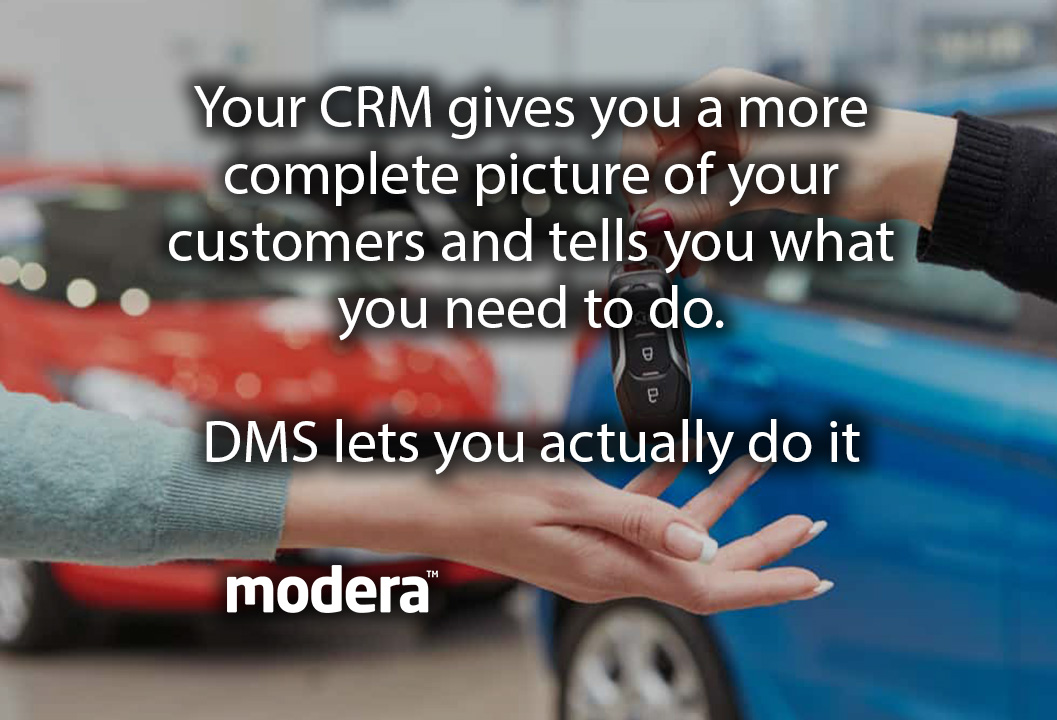
The good news is that there are dealership management solutions created for specific types of dealers. But if you are not aware of the available options, you may end up with a disappointing generic platform. At the same time, it is indeed difficult to sift through all the generic options out there to find your industry-specific DMS.
What is the relationship between Automotive CRM and DMS?
In order to use the information provided by the automotive CRM in an effective manner, you need DMS. The CRM system collects loads of data about customers in the form of emails, surveys, notes, call records and more. Most of the time, your employees are working with a CRM system in order to find new customers or sell to existing ones. But customer relationships require a lot of paperwork. Your employees may have to generate new sales contracts, find existing paperwork, or add specific sales orders to your customer files.
If employees constantly have to leave your CRM in order to search for emails, contracts, or other documents, means they are spending unnecessary time and effort on non-productive tasks. Switching between tasks can cause staff to lose focus. In the meantime, it takes a lot longer to respond to your customers. And to get the job done because your employees are searching for documentation. That is exactly why you should integrate the CRM and DMS systems.
Should you use automotive CRM and DMS together?
If your salespeople can work inside of your CRM and generate new business, they are doing what they do best. Integrating your CRM with DMS ensures that they are finding new customers instead of hunting down paperwork. Or collecting new paperwork outside of your CRM. While integrating your CRM with your DMS may only save your salespeople a few minutes on each transaction, this time adds up.

CRM is essential for your business, and DMS is an essential office solution for information management. Switching to a paperless office with dealer management software is also important if you don’t want to waste time looking for paperwork. Fortunately, Automotive CRM and DMS can work well together, as long as you choose the right solution.
Regardless of what type of CRM your company uses, dealer management software is necessary to connect the dots. Your CRM provides you with important sales data while your document management software collects internal information, too, including your financial data. Your DMS helps you organize all of your documents and records in a meaningful way. Instead of searching through files on your employees’ computers, emails, or filing cabinets, there is only one place you need to search when you need a document.
Why is CMS and DMS integration necessary?
Automotive CRM without DMS is like a car without fuel, only worse. Think of customer relationship management, as a perfect library where everything is tidily arranged. It manages your client relationships and organizes all the information about your interactions with customers. But even with that treasure trove of information, you still need to do some heavy lifting to effectively useit. That is where DMS plays a crucial role. Adopting a full integration is where you really start to see results, with reductions in labor hours of almost 50%, all while reducing costs across the board. Simply put, Automotive CRM and DMS integration is the way of the future.
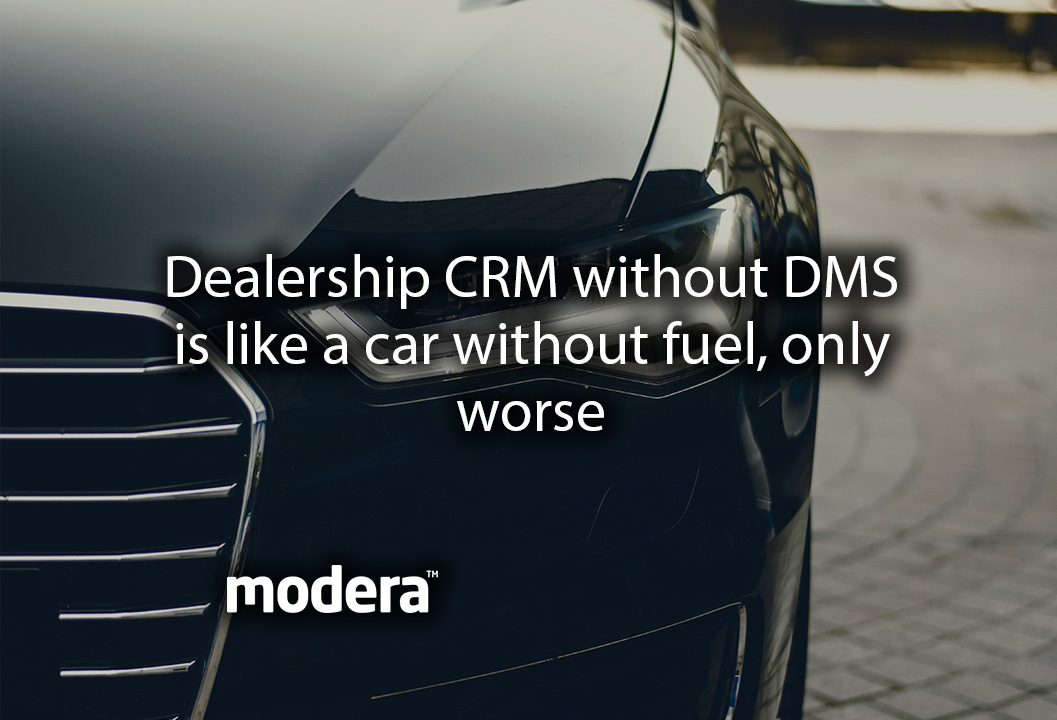
What is the difference between Automotive CRM and DMS?
CRM centralizes your business’s information about customer interactions, automating interactions and outreach while tracking customer journeys. Whether a customer is making a purchase, getting help, or interacting with one of your ads. CRM takes all that data and rolls it up into one tidy package.
DMS is also all about centralization. It streamlines business operations by taking your documents — from contracts to text files to emails, scans, and more — and organizes them in an easily manageable repository. So what are the benefits? No more wasting time searching for the right document, and no more waiting to seal the deal.
So how does a Automotive CRM and DMS integration work?
Think of it this way. Your CRM gives you a more complete picture of your customers and tells you what you need to do. DMS lets you actually do it. In real-world terms, your employees might work with a CRM to sell more cars to customers, while the DMS provides them with contracts and other paperwork to speed up the process. Automotive CRM and DMS can save your business time and money on their own. But put them together, and the positive results can be exponential. Integration of automotive crm and dms can help in the following way:
- Workflow automation – with an integrated system, sending documents over email is a thing of the past. That means no more missing contracts and no more lag-time. Your documents are automatically organized and sent to the right place by your CRM. Exchange-heavy processes such as onboarding and training can be sped up dramatically.
- Costs savings – your business is trying to generate and find new customers. CRM makes that process easier, but adding DMS to the mix kicks it up a notch. Every minute not spent chasing after a document is another minute that can be spent making sales and boosting revenue. And over thousands of interactions, that time-saving quickly adds up to significant cost savings.
- Time saved on manual data copy-paste – a DMS will keep your documents organized, but filling them out can still be a labor-intensive process. Integrating with a CRM system means that document templates can be auto-filled with the right information. In other words, no more manual copy-and-pasting, so hours are saved.
In summary
For salespeople and customer representatives, Automotive CRM and DMS (dealer management system) integration can speed up every interaction with customers. For project managers, a smoothly functioning team is the dream. And if you are not hunting down documents, it frees up more time for big-picture thinking and high-level strategizing. Ideally, it is best to have both software at a dealership, so it can function smoothly, but please conduct sufficient research on the types of automotive CRM and DMS available so you could decide which is the best suited for your business.
